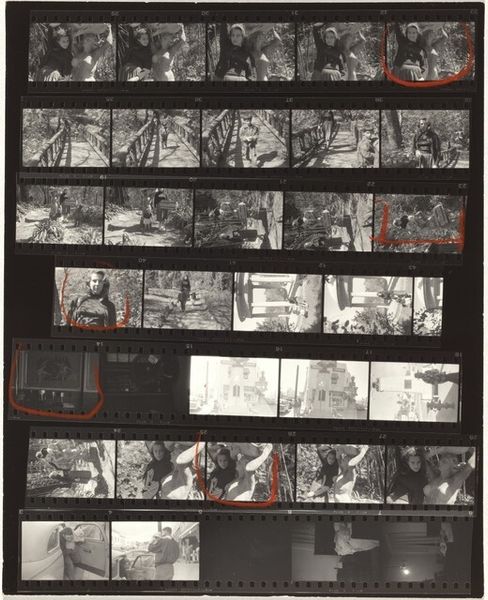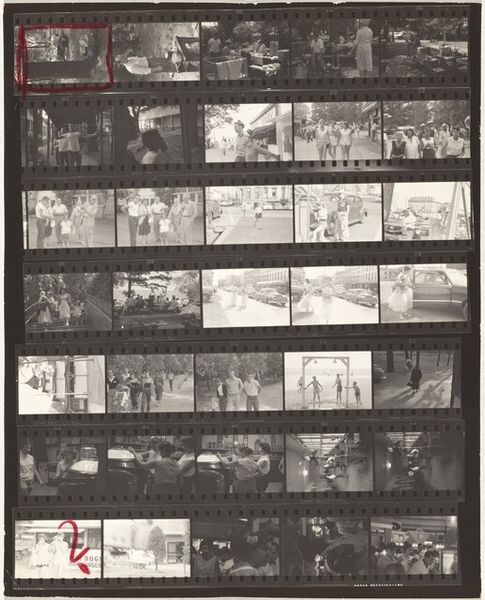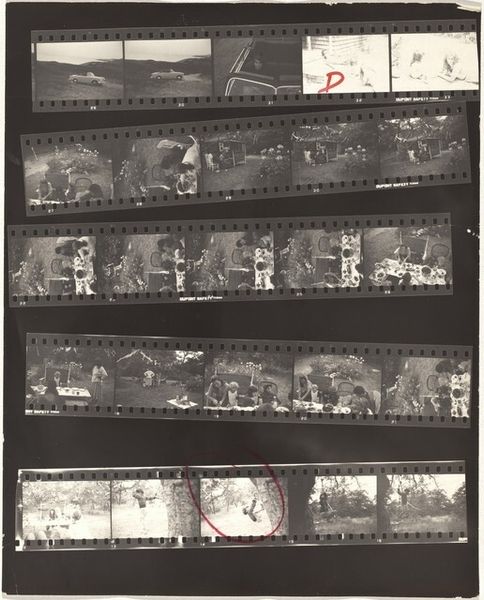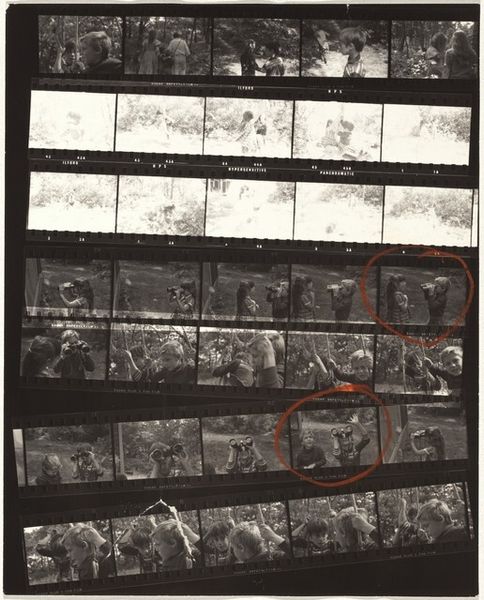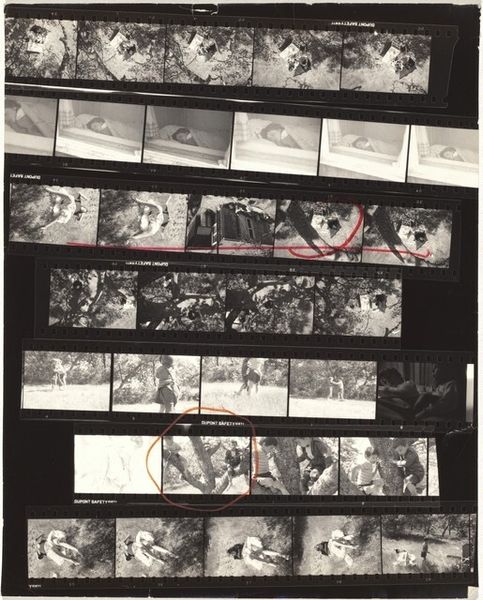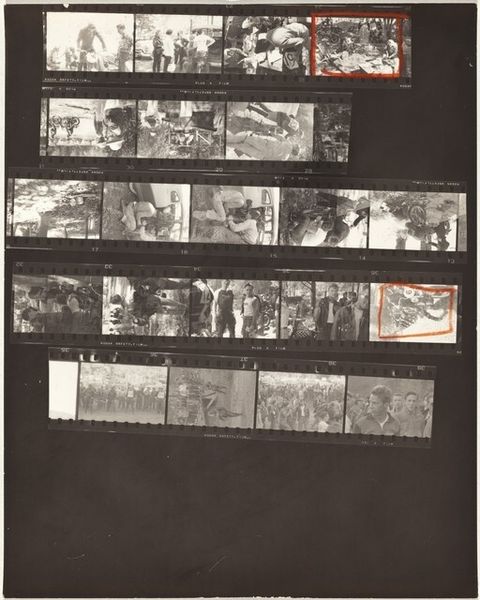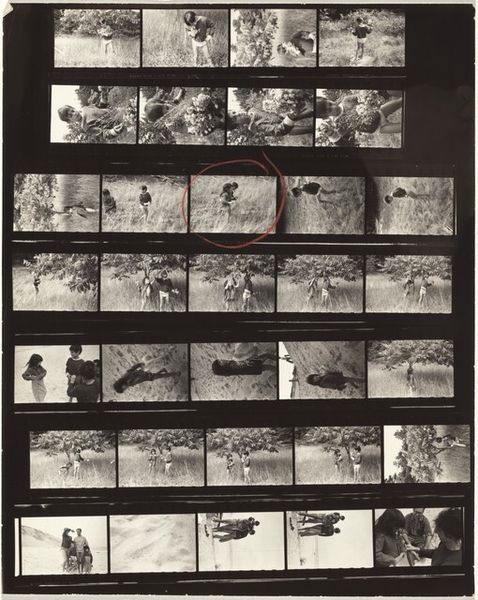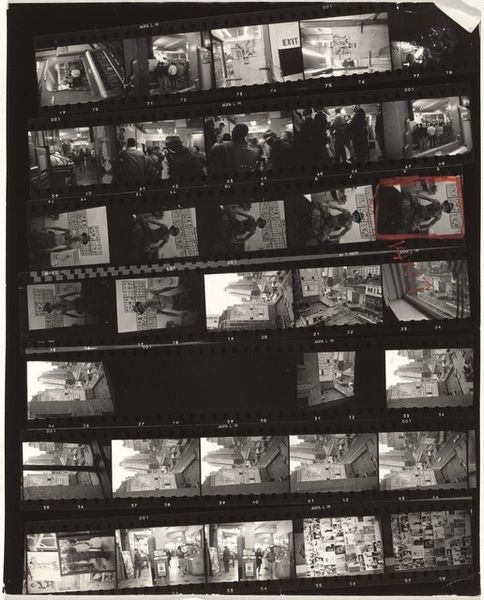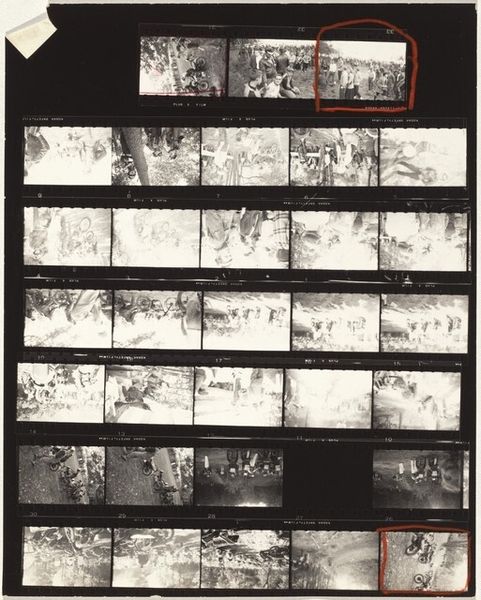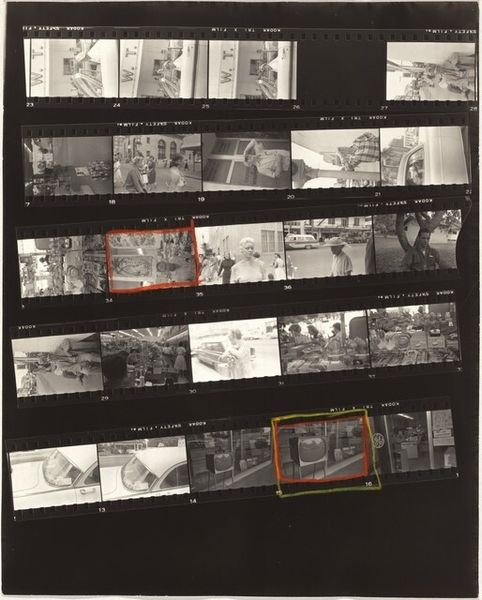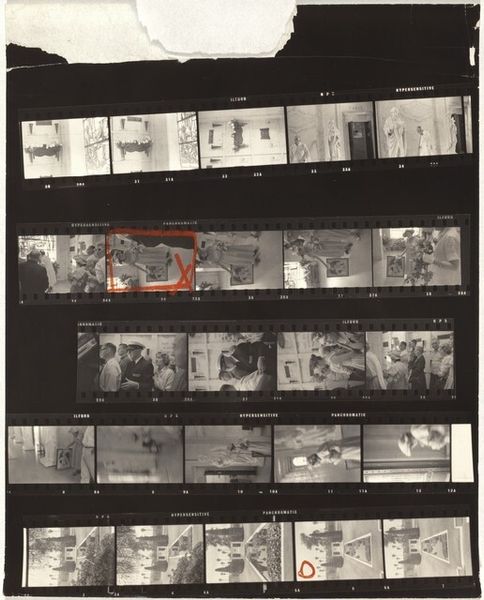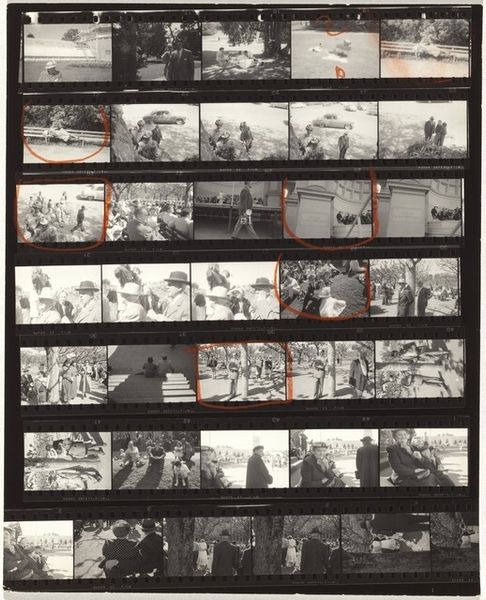
Dimensions: overall: 25.3 x 20.3 cm (9 15/16 x 8 in.)
Copyright: National Gallery of Art: CC0 1.0
Curator: This is Robert Frank's "Family in Provincetown 3," a gelatin-silver print made in 1958. My immediate reaction is one of fragmented narratives; it's raw, a little jarring, even. The dark borders framing the strips of images really draw my eye, and I almost feel like a voyeur peeking in. Editor: Absolutely, the contact sheet format creates a distinct feeling. It makes us question Frank's choices. Looking through my lens, "Family in Provincetown 3" fits into the larger history of street photography's evolution. The work underscores the breakdown of traditional photographic narratives, mirroring the shifting societal landscape of postwar America. Curator: Right, the chaotic, non-linear sequencing is key here. We're forced to confront not only what Frank chooses to show, but how he chooses to show it, creating what almost amounts to a deconstruction of image-making itself. How does this choice impact your interpretation, from a historical perspective? Editor: The way the strips are organized is reminiscent of crime scene photography—documenting before building a story—emphasizing a rupture within familiar photographic language. Thinking about other works that employ similar aesthetics in a broader framework – Nan Goldin, for example – we start to realize the commonality of breaking convention and hierarchy to reflect changing social mores and counter-culture identities. Curator: That rupture absolutely speaks to me; I wonder about the individual framed by this sheet. Does her presence mean to humanize this supposed fracture, and thus bridge the societal gap through shared emotional truths, or does she serve merely to emphasize societal issues reflected through an objective gaze? Editor: I see her gaze—caught at various times across the lower band of shots—as an engagement. Her direct gaze implicates viewers as participants, a critical element in understanding how such artists navigate a tense social fabric with sensitivity. The politics of visibility become intensely personal. Curator: A powerful consideration of subjectivity in the context of public observation. Well, it's clear that beyond being simply documentary, "Family in Provincetown 3" makes us question assumptions we may not have even known we held. Editor: Agreed. By disrupting our comfort with passive viewership, the images remind us that to witness is to engage, however reluctantly. And to confront is an inevitable evolution within both art history and social commentary.
Comments
No comments
Be the first to comment and join the conversation on the ultimate creative platform.
